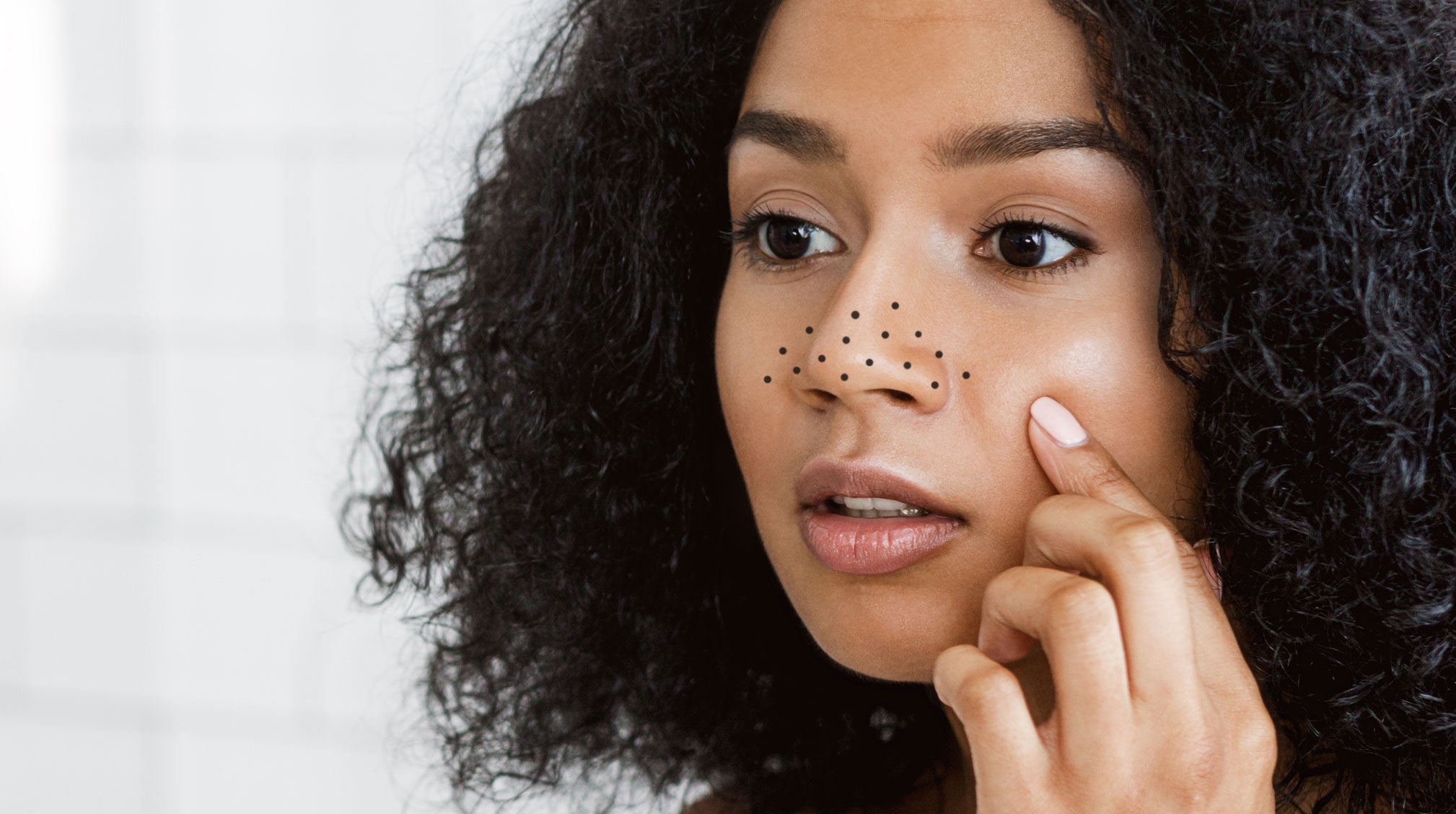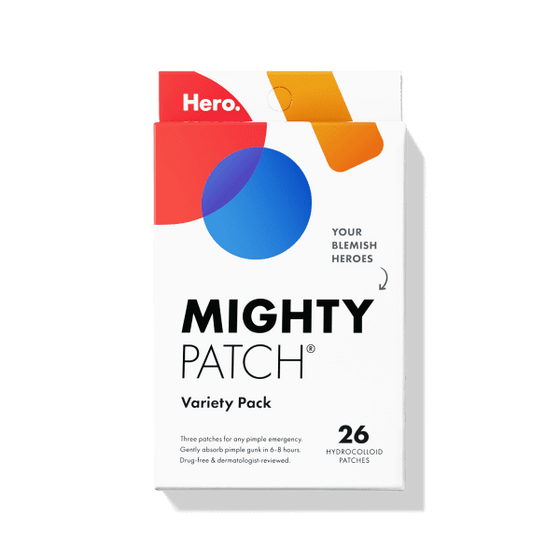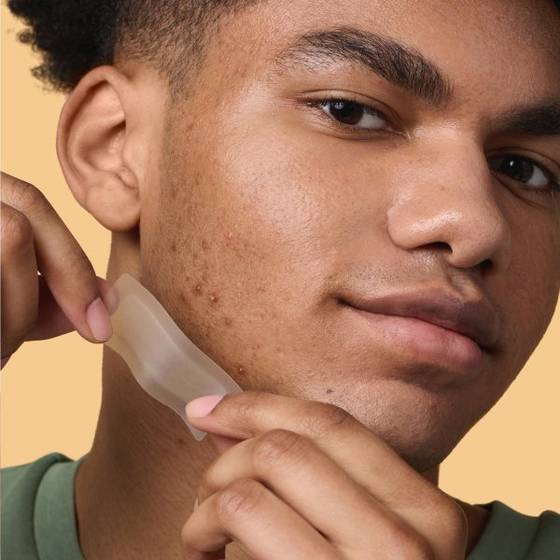
Even if you don’t know a whole lot about acne, you’re probably familiar with blackheads. Almost everyone has at least a smattering of those pesky black dots, especially on and around the nose.
If it seems like every time you clear your blackheads, they keep coming back, you aren’t going crazy. Because blackheads are open to the skin’s surface, many people think that a simple squeeze or at-home extraction should do the trick. However, that very same pore is likely to become clogged again if you don’t change your everyday skincare habits.
So leave the blackhead extractions to a dermatologist, trained facialist or Dr. Pimple Popper (just google dr pimple popper blackheads if you’re not familiar), and keep reading to learn how to get really rid of your blackheads once and for all.
First off, what causes blackheads?
“Blackheads form when skin pores and hair follicles become clogged with dead skin cells, oil and bacteria,” explains Dr. Adam Mamelak, an Austin-based, board-certified dermatologist. If you’re thinking, none of those things are as dark as blackheads, you’re right. “With blackheads, the pores are not completely sealed off. Air is still able to get into the pores and oxidize the trapped sebum oil, turning it black in color.”
That exposure is also why blackheads are known as open comedones. Unlike closed comedones, or whiteheads, blackheads do not have a layer of skin or keratin sealing off the pore.
RELATED READ: Open, Closed, WTH Are Comedones?
“Those who tend to produce more oil tend to get more clogged pores,” says Dr. Susan Bard, an NYC-based, board-certified dermatologist. “As do those who apply more pore-clogging products
to the skin.” While all skin produces oil, or sebum if you want to use the technical term, hormonal fluctuations, genetics and other factors cause some people to secrete more oil than others. And basically, the more oily your skin is, the more blackheads you are likely to have.
But it’s not a lost cause, even for those of us with a forehead that looks like an oil slick in just about every midday unfiltered photo. Ahead, three dermatologists share their top tips for banishing blackheads.
How to get rid of blackheads
1. Resist the urge to pinch, push or squeeze.
You already know that you shouldn’t pick or pop any sort of acne, but it can be tempting to gently push the black plug out, since the pore is already open. However, at-home blackhead removal can cause scarring and long-term damage to your skin. Skip the extraction tools, too. Dermatologists and facialists are trained to use those tools, and know how to do so without scratching or injuring skin.
2. Try to avoid extraction pore strips, peels and masks.
Many of us remember literally pulling blackheads out of our pores via a convenient little strip. However, Dr. Tsippora Shainhouse, a Beverly Hills-based, board-certified dermatologist recommends using pore strips only every-so-often and with caution. “They stick to the top layer of the skin, and may help pull out some of the surface debris from blackheads, but they also rip out sebaceous filaments (part of your pore!), fine hairs and the top layer of skin. If it dries too much and hurts to remove, don't rip it off! Wet the strip and gently ease it off the skin.”
Extraction peels are a hard no, according to Shainhouse. In addition to removing the natural oils and hair follicles that healthy skin needs, “they can also irritate sensitive, fragile, acne-prone skin and even slow the healing of inflamed acne lesions or potentially cause scarring!”
3. Get glowing with acids.
“Using products that contain salicylic acid and AHAs is one of the best approaches to exfoliate dead skin cells and open up pores,” says Mamelak. When choosing a cleanser, try salicylic acid first, since it exfoliates both the surface and inside the pore. However, if you have sensitive skin or experience irritation from salicylic acid, Shainhouse recommends switching to AHAs like glycolic acid or lactic acid), which do not penetrate the skin as deeply, but can still help clear blackheads.
4. For stubborn blackheads, consider topical retinoids.
Dr. Rina Allawh, a board-certified dermatologist practicing in the Philadelphia area, often recommends that patients with persistent blackheads try a prescription nighttime topical Retin-A, specifically Tretinoin or Tazorac. “Tretinoin skillfully speeds up the skin’s ability to turn over, opening up blocked pores and evening out dyspigmentation, as well as promoting collagen synthesis.” As an added bonus, retinoids will also help to soften fine lines and wrinkles with continued use.
5. To prevent future blackheads, find a routine that works for YOU.
Everyone with blackheads does not have the same skin type, so it’s important to customize these suggestions until you find a routine that works for your skin. When in doubt, consult a dermatologist. “Remember to go slow,” says Mamelak. “Too much exfoliation can dry out your skin, leaving it dull and flaky, and ultimately leading to more breakouts.” And no one wants that! 😉












.png?v=1663017252122)



